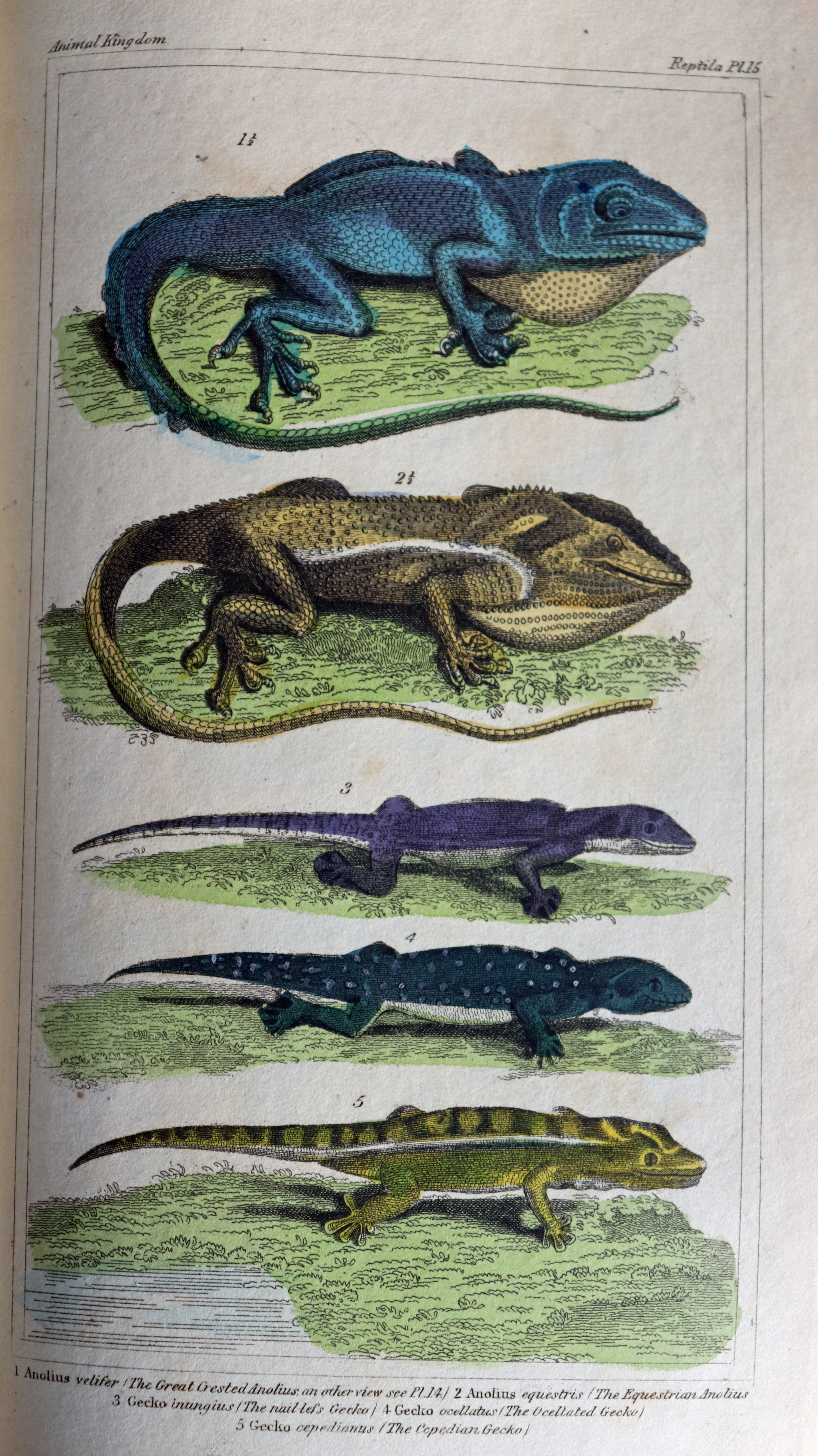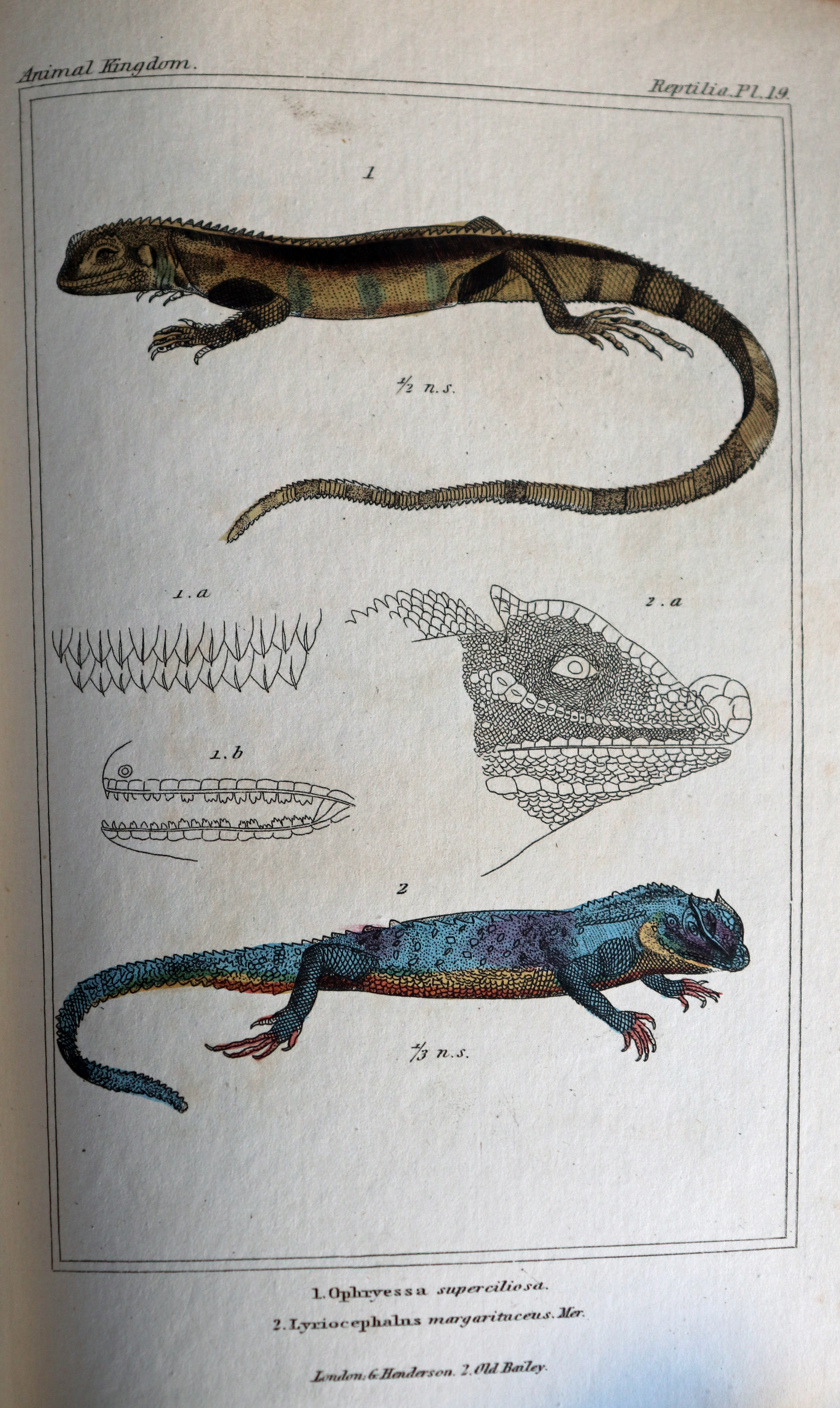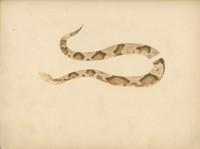History
The official name of the Zoology Library is the Balfour & Newton Libraries. The names Balfour and Newton commemorate Francis Maitland Balfour (1851-1882) Professor of Animal Morphology, and Alfred Newton (1829-1907) the first Professor of Zoology. Balfour's books, given by his family to form the nucleus of the Zoological Department Library, were housed on the site of the Austin Wing of the Cavendish Laboratory until the Department moved in 1933. The Newton collection, of ornithological importance, was bequeathed to the Museum of Zoology in 1907. It was transferred in 1938 when the Museum was incorporated into the Department.
Scope of the collections
The Special Collections comprise approximately 8,750 volumes which date from the fifteenth to the mid-twentieth century, as well as over 60,000 offprints, manuscripts, photographs and several paintings.
Books dating from the fifteenth to mid-twentieth centuries
Short catalogue records for the books in these collections can be retrieved via iDiscover, the online catalogue for the libraries in the University of Cambridge.
In short, the collections are primarily made of gifts with some more recent purchases added as appropriate. These include the bequests from the two main library founders, Francis Maitland Balfour and Alfred Newton and the following collections:
- The Robert MacAndrew Collection (1873). Conchology. 300 volumes.
- The Hugh Strickland Collection (1875 & 1881). Ornithology. 422 volumes.
- The Robert Washington Oates Collection (1897-1940). Ornithology. 45 volumes
- The Thomas Buckley Collection (1903). (transferred to University Library, 1975). Chiefly fauna of Africa. 260 volumes and other items including papers and maps.
- The Webb Smith Collection (1902). 500 original water colours of African and Indian birds and scenes which were presented by Mrs. Atkinson of Clare College.
- The Alfred Merle Norman Collection (1912). Natural history. Over 1200 volumes of books and offprints.
- The Henry Hogg Collection (1924). Spiders etc.
- The Hugh Watson Collection (1960). Malacology. Over 1000 offprints and 50 books.
- The Papers of Sir Vincent Wigglesworth (transferred to Churchill College Archives Centre, 1992). Entomology.
- The Roger Lubbock Collection (1980's?). Fish. 30 volumes, mainly on open access.
- Eltringham African Collection (2006). African ecology, wildlife conservation and management. Over 135 books and other items, around 50 theses.
Offprints
There are over 60,000 scientific offprints dating from the nineteenth and twentieth centuries.
Portraits
There is a collection of portraits (paintings, photographs, busts, likenesses, group photographs, carte de visites, etc.) of prominent scientists. Please direct any queries about these portraits to the Senior Library Assistant in the first instance.
Manuscripts and archives
The Balfour & Newton Libraries owns a substantial collection of manuscripts and archives. The bulk of the collection is made up of the Alfred Newton Papers, which includes all of Professor Alfred Newton's correspondence as well as photographs, prints, printed papers and pamphlets. There is also some teaching and research material that belonged to or relates to other former members of the Department of Zoology. This entire collection was transferred to the Department of Manuscripts & University Archives at Cambridge University Library in 1989.
Please see here for more information on this collection, from where you will be able to download a PDF catalogue of the collection. Please note that at the end of that document there is a brief list of material that has not yet been catalogued; it may be that we have more details of this material than is described in the catalogue so please contact the Senior Library Assistant if you have any queries. Otherwise you will need to contact the Department of Manuscripts & University Archives at Cambridge University Library directly to make an appointment to consult the material there.
Bibliographies
The Balfour & Newton Libraries' Special Collections are listed in these two bibliographies:
- Bloomfield, B.C. (ed.) (1997) A Directory of Rare Book and Special Collections in the United Kingdom & the Republic of Ireland, 2nd edition.
- Bridson, G.D.R., Phillips, V.C. & Harvey, A.P. (1980) Natural History Manuscript Resources in the British Isles, Mansell, London.
Current display
December 2022
These images were photographed from a book in our special collections:
The dodo and its kindred: or, The history, affinities, and osteology of the dodo, solitaire, and other extinct birds of the islands Mauritius, Rodriguez, and Bourbon, by H.E. Strickland and A.G. Melville. London: Reeve, Benham, and Reeve; 1848.
Zoology Library classmark: qKD (6)
The images are: A painting by an unknown artist of a dodo, probably "drawn in Holland from the living bird, brought from St. Maurice's Island in the East Indies", and surrounded by American macaws, ducks, and other birds. Plate 5. Side views of the head of the dodo. Fig. 1. With the dried skin, from the unique specimen at the Ashmolean Museum at Oxford. Fig. 2. restored chiefly from the painting of the dodo by an unknown artist and presented by the ornithologist George Edwards to the British Museum.
This copy of the book was the private copy of Catherine Dorcas Maule Jardine, Strickland's widow. It is interleaved with blank pages with copies of the illustrations and plates pasted on, along with some extra illustrations not included in the published version.
Hugh Edwin Strickland (1811-1853):
Strickland was an English geologist, ornithologist, naturalist and systematist. He contributed a number of papers to the Geological Society from his researches in the UK and overseas. Among his other ornithological works were Illustrations in Ornithology and Ornithological Synonyms. The library has an unpublished, manuscript version of the latter but there was only one volume published after his death, which was edited by his wife Catherine and father-in-law Sir William Jardine.
Alexander Gordon Melville (1819-1901):
Melville was an Irish comparative anatomist, best known for his work on the dodo. He worked on the anatomical aspects of the book by studying various part specimens held in collections across the country. Strickland and Melville's work lead to a disagreement with the palaeontologist Richard Owen over the classification of the dodo. They believed it was related to pigeons and doves but Owen thought it was related to vultures.
Sources:
Hugh Strickland https://en.wikipedia.org/wiki/Hugh_Edwin_Strickland
Alexander Melville https://en.wikipedia.org/wiki/Alexander_Gordon_Melville
Previous display
December 2019
These images were photographed from a book in our special collections:
The Animal Kingdom, arranged according to its organization, serving as a foundation for the natural history of animals, and an introduction to comparative anatomy, by Baron Cuvier. Translated from the latest French edition, with additional notes, and illustrated by nearly 500 additional notes. Volume II: Reptiles-Fishes. London: G. Henderson; 1834.
Zoology Library classmark: HBC (3)
The images are: Plate 15. Colour plate depicting two species of iguana and three species of gecko. Plate 19. Colour plate of Ophryessa superciliosa (Diving lizard) and Lyriocephalus margaritaceus (Hump nosed lizard) accompanied by line drawings of some of their features.
Georges, Baron Cuvier (1769-1832):
Cuvier was a French naturalist and zoologist. He was instrumental in establishing the fields of comparative anatomy and palaeontology through his work comparing living animals with fossils.
Through his researches, Cuvier established extinction as a fact. His first paper described how Indian and African elephants were different species and, as the mammoth was neither of these species, it must be extinct. In his Essay on the Theory of the Earth, published in 1813, he proposed that now-extinct species were wiped out by periodic episodes of catastrophic flooding.
Le Règne Animal (The Animal Kingdom), first published in 1817, is Cuvier’s most famous work. It describes the natural structure of the whole animal kingdom based on comparative anatomy. Cuvier divided the animals into four branches: vertebrates; molluscs; articulates and zoophytes.
Cuvier disagreed with the theories of evolution presented by Jean-Baptiste de Lamarck and Geoffroy Saint-Hilaire. Their opposing views led to a public debate at the French Academy of Sciences in 1830. Cuvier believed that the structure of his four branches of animals was determined by their functional needs. Geoffroy believed there was one basic unified form which was modified over time across all animal forms.
Sources:
Georges Cuvier https://en.wikipedia.org/wiki/Georges_Cuvier
Le Règne Animal https://en.wikipedia.org/wiki/Le_R%C3%A8gne_Animal
Cuvier-Geoffroy debate https://en.wikipedia.org/wiki/Cuvier%E2%80%93Geoffroy_debate
Photos courtesy of Rachel Aucott.
Past exhibitions
Darwin's Mentor : Walking with Henslow, 24th October 2020 - 25th April 2021
The Zoology Library has loaned a book from its special collections to the Museum of East Anglian in Stowmarket, Suffolk for their exhibition celebrating the life of John Stevens Henslow, an inspirational teacher, skilled botanist and lifelong friend and mentor of Charles Darwin.
The book on loan is Leonard Jenyn's Memoir of the Rev. John Stevens Henslow, 1862. Classmark: D4 HEN Jen.
As well as being professor of botany at the University, Henslow was rector of the village of Hitcham, Suffolk from 1837-1861. He used this positiuon and his progressive teaching methods to educate and raise the aspirations of the local community. Henslow is famous for having secured the naturalist Charles Darwin his place on the voyage around the world on board HMS Beagle, a trip that inspired his ground-breaking theory of evolution.
Please see the Museum of East Anglian Life website for more information.
Catesby : Watercolours from the Royal Collection, 6th July - 12th October 2013
The Zoology Library loaned a book from its special collections for exhibition at Gainsborough's House, the museum and birthplace of 18th century landscape and portrait artist Thomas Gainsborough, in Sudbury, Suffolk.
It loaned its 1st edition copy of volume 1 of Mark Catesby's Natural History of Carolina, Florida and the Bahamas, 1731. Shelfmark: Folio (275).
The exhibition 'Catesby: Watercolours from the Royal Collection' celebrates the life and works of East Anglian naturalist and artist Mark Catesby, who spent his childhood in Sudbury and travelled to North America to produce the first detailed study of the flora and fauna of the 'New World'.
The watercolours from the Royal Collection are original studies for the plates in the book, and the volume was on display alongside them, so you could compare a watercolour with its final plate.
Please see the related blog post here: http://www.balfourlibrary.blogspot.co.uk/2013/07/rare-book-on-loan-for-exhibition-at_30.html
Darwin: Beetles, Finches, Barnacles, March 2008 - June 2013
The Zoology Library lent some of their books to the University Museum of Zoology Cambridge for their exhibition Darwin: Beetles, Finches, Barnacles from 24 March 2008 onwards.
Endless Forms: Charles Darwin, Natural Science and the Visual Arts, 16th June - 4th October 2009
The Zoology Library loaned one of their books to the Fitzwilliam Museum for their exhibition Endless Forms: Charles Darwin, Natural Science and the Visual Arts. The book is Gerald H. Thayer's Concealing-Coloration in the Animal Kingdom, 1909. The exhibition was held first at the Yale Center for British Art from 12th February 2009 until 3rd May 2009. Visit the exhibition website athttp://www.darwinendlessforms.org/home.html for more information on this ground-breaking exhibition that explores the impact of Darwin's theories on late nineteenth century artists.
A stencilled piece of card illustrating dried leaves covers plate xi of Thayer's work and reveals the shape of the copperhead snake when you lift it up. The overall effect demonstrates the camouflage properties of the snake. An image of this is featured on page 114, Fig. 117, in the exhibition catalogue Endless forms: Charles Darwin, Natural Science and the Visual Arts, edited by Diana Donald and Jane Munro. Fitzwilliam Museum, Cambridge: Yale Center for British Art, New Haven, CT: in association with Yale University Press; 2009. Balfour Library shelf mark: qFY (8).
Credits
Images of items from our Special Collections have been reproduced and acknowledged in several publications:
Birds, other animals and natural curiosities, by Henrietta McBurney ... [et al.]. London : Royal Collection Trust : Harvey Miller; 2017. Zoology Library classmark: qHC (7)
Christopher Webb-Smith: an artist at the Cape of Good Hope, 1837-1839, by A. Gordon-Brown. Cape Town: H. Timmins; 1965. Zoology Library classmark: qKZ.6 (47).
Endless forms: Charles Darwin, Natural Science and the Visual Arts, edited by Diana Donald and Jane Munro. Fitzwilliam Museum, Cambridge: Yale Center for British Art, New Haven, CT: in association with Yale University Press; 2009. Zoology Library classmark: qFY (8).
François Le Vaillant and the birds of Africa, by L.C. Rookmaaker ... [et al.] ; translator, F.M. Webb. Johannesburg : Brenthurst Press; 2004. Zoology Library classmark: qKZ .6 (49).
From Merchants to Emperors: British Artists in India, 1757-1930, by Pratapaditya Pal and Vidya Dehejia. Cornell University Press; 1987.
The Great Auk, by Errol Fuller. 1999. Zoology Library classmark: qKN (5)
A history of ornithology, by Peter Bircham. London : Collins; 2007. Zoology Library classmark: K (226).
John Gould in Australia: letters and drawings, by Ann Datta. Melbourne University Press; 1997.
Life and works: Charles Michell, by G. Richings. Fernwood Press (Pty) Limited, South Africa; 2006.
Making Visible Embryos virtual exhibition created by staff from the University of Cambridge Department of History and Philosophy of Science, at http://www.hps.cam.ac.uk/visibleembryos/
Splendid plumage: Indian birds by British artists, by Jagmohan Mahajan; with descriptions of birds by Bikram Grewal. Hong Kong: Local Colour Limited; 1965. Zoology Library classmark: qKZ.54 (1).
Willughby's angel: the pintailed sandgrouse (Pterocles alchata), by Isabelle Charmantier and T. R. Birkhead. J. Ornithol. (2008) 149: 469-472. Three of our rare books feature in this article: Gessner's Historiae animalium liber III qui est de avium natura (1555), Charleton's Gualteri charletoni exercitationes de differentiis & nominibus animalium (1677), and Aldrovandi's Ornithologiae, tomus tertius (1603).
The wisdom of birds: an illustrated history of ornithology, by Tim R. Birkhead. London: Bloomsbury; 2008. Zoology Library classmark: K (227). This book features many photographs taken of bird illustrations from books in our Special Collections. It was The Guardian's 'Book of the week' on Saturday October 18th 2008. You can read their review at http://www.guardian.co.uk/books/2008/oct/18/tim-birkhead-ornithology
Zoology Library Conservation Project: Cleaning the collections
A wonderful team of five NADFAS (National Association of Decorative & Fine Arts Societies) Heritage Volunteers has cleaned our rare books. They started in July 2011 and completed the project in September 2013.
Clair Castle, Librarian at the time, wrote an article all about the project and the progress made so far for the NADFAS Review Volunteers Supplement which was published on 25th May 2012.
Clair has also blogged about the project on the Balfour Library News Blog at http://www.balfourlibrary.blogspot.co.uk/search/label/cleaning.







